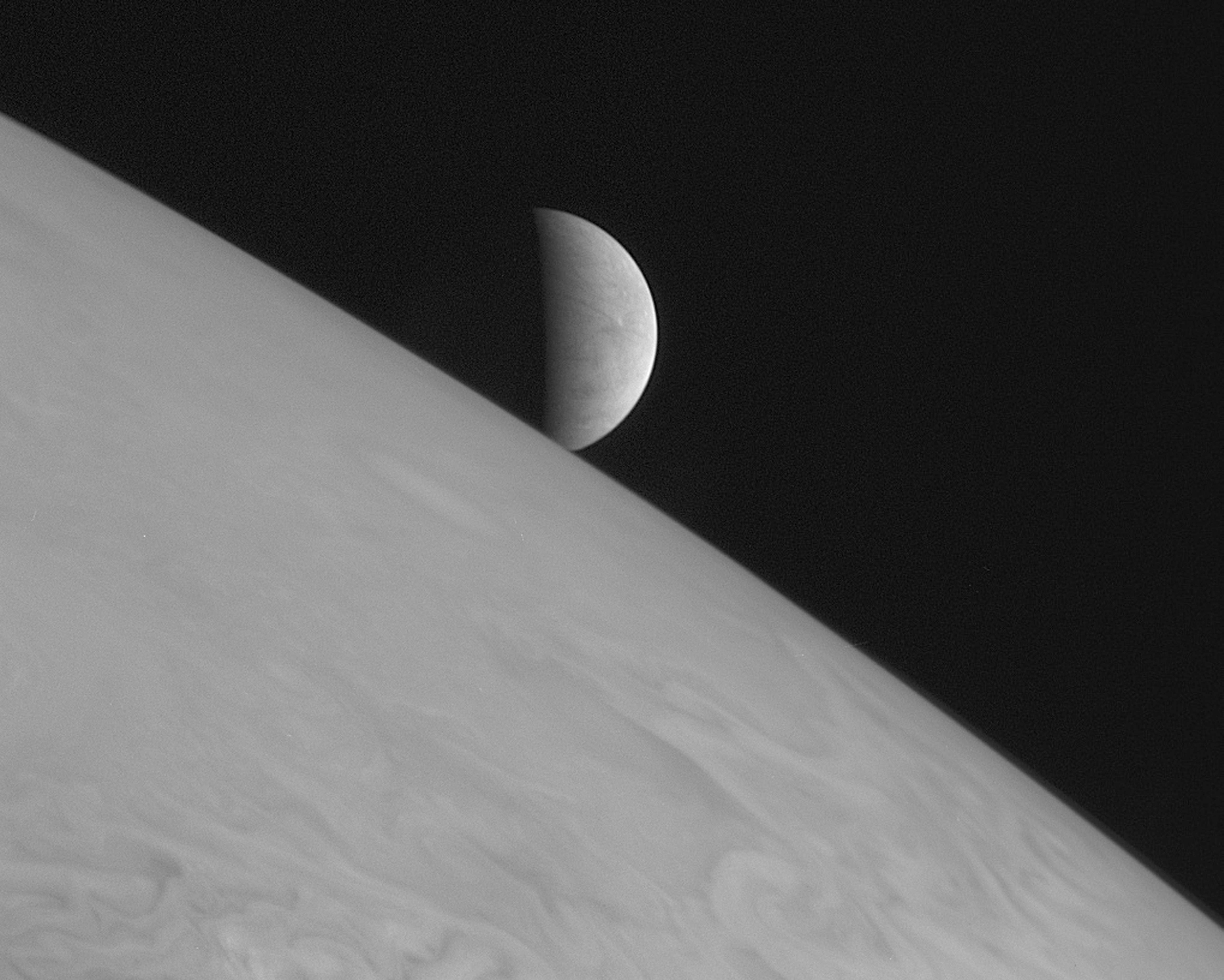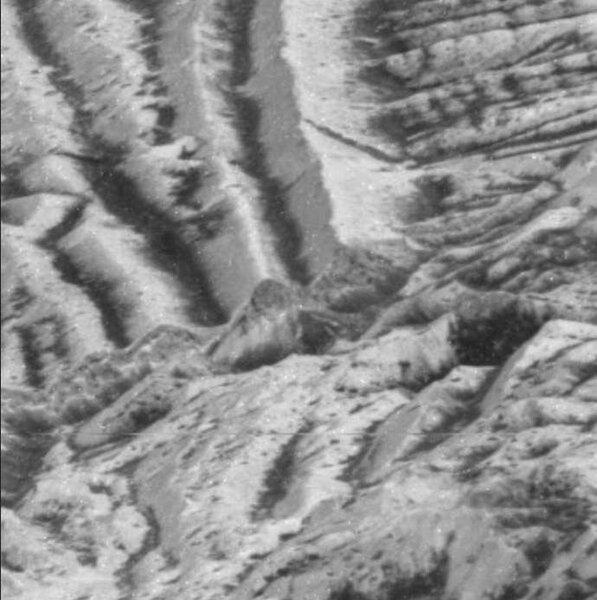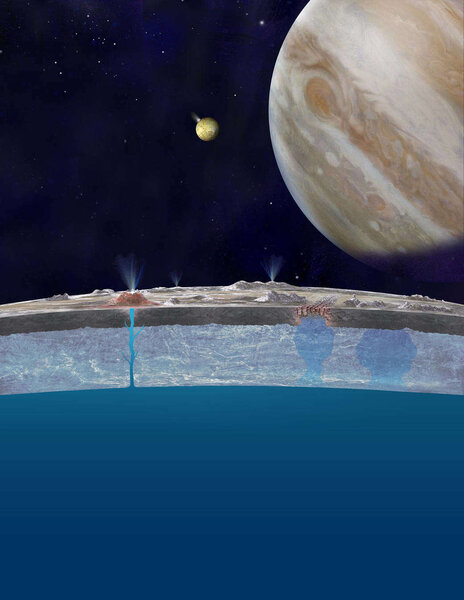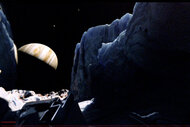Create a free profile to get unlimited access to exclusive videos, sweepstakes, and more!
Europa’s radiation-bombed surface could affect the search for life-forms in its depths

We may or may not find an entire monolith like the one at the end of 2010: Odyssey Two in the subsurface ocean of Europa, but we’re probably going to have to modify how we search for life-forms either way.
Europa’s surface has taken a beating from both objects in space and killer radiation. New research on the moon orbiting Jupiter has found that multiple impacts on its icy crust could affect potential life that lies beneath, bringing hypothetical microbes that either live within the ice (it’s possible) or the water to the surface, where they would risk being irradiated. That means we’re going to have to plunge deeper to search for anything that might look alive.
Before NASA’s Europa Clipper mission takes off to investigate and see what kind of outlook a future lander would have, scientists need to know how deep a probe would have to reach in order to have some chance at discovering life, if it exists. Planetary research scientist Emily Costello of the University of Hawaii at Manoa has an idea.
“Because Europa is bombarded by radiation captured by Jupiter and because it is tidally locked, it runs into radiation as it orbits around Jupiter,” Costello tells SYFY WIRE. “The most intense radiation is on the leading hemisphere around the equator. At higher latitudes the radiation is less intense. Less intense radiation means shallower preservation of possible biosignatures.”
Costello led a study, recently published in Nature, in an effort to figure out where hypothetical life on Jupiter would be safe from the effects of impacts churning hunks of ice and water near the surface. This phenomenon is known as “ice gardening.” It doesn’t help that killer radiation is only sent to Europa faster by its overlord Jupiter. Europa is unfortunately close enough to get hit with radiation caught in the gas giant’s magnetic field. Being tidally locked also means one side never turns away from Jupiter to avoid irradiation.
Because radiation is constantly pelting Europa, ice gardening that could bring up microbes that were previously safe probably means any life-form remotely near the surface would meet its doom — and convince scientists back on Earth that Europa is lifeless. The age of any given part of Europa’s surface factors into how deep impact gardening has managed to plunge. This makes sense because parts of the moon that have been around have also seen their share of impacts, while newer parts haven’t been exposed to that many asteroids yet.
“From our gardening calculations, we were able to point to several regions and fresh craters within those regions which represent promising targets for future observations,” Costello said. “These represent the best known regions — but we don’t have high-resolution images covering all of Europa.”
What this means for potential life on Europa is that it is more likely to be found at higher latitudes, where there haven’t been nearly as many impacts. More craters form over an extended period of time. How many craters and what size they are also depends on the planetary body being focused on, and its size, composition, and location are some of the things that affect its risk for bombardment. Secondary impacts also have to be accounted for. These are craters formed when debris kicked up from a more intense impact plummets back to the surface.
Costello and her team used a lunar model for crater production derived from statistics that scientists came up with during the Apollo era. They upgraded this model with newer observations from the Lunar Reconnaissance orbiter, including secondary craters and evidence of impact gardening in the cores of lunar soil brought back to Earth by Apollo astronauts. They then took the lunar model and factored in crater production on Europa, which helped them estimate just how far down impact gardening actually has an impact.
Because impact gardening is not unique to Europa, future findings from the Europa Clipper mission can help us understand more about potential life on other icy worlds, like Enceladus and Titan, as well as other planetary objects. Maybe impact gardening is why we haven’t found any evidence of life on or near the surface of Mars so far. Even if there is no life on the bodies where impact gardening is studied, it can reveal geologic processes that could tell us more about the emergence of the solar system.
More hi-res images of Europa’s surface are going to have to wait until Europa Clipper can get closer to Jupiter’s moon. Costello is especially looking forward to this.
“I am excited to see the many high-resolution images which we will see when Europa Clipper arrives,” she said. “Those images will help us better understand how deeply those impacts have been gardening and help point us to the best places to look for biosignatures.”
By the way, Costello's study found that a monolith like that in Odyssey Two would need to be at least six feet under the surface if it was to survive intact for millions of years.
















